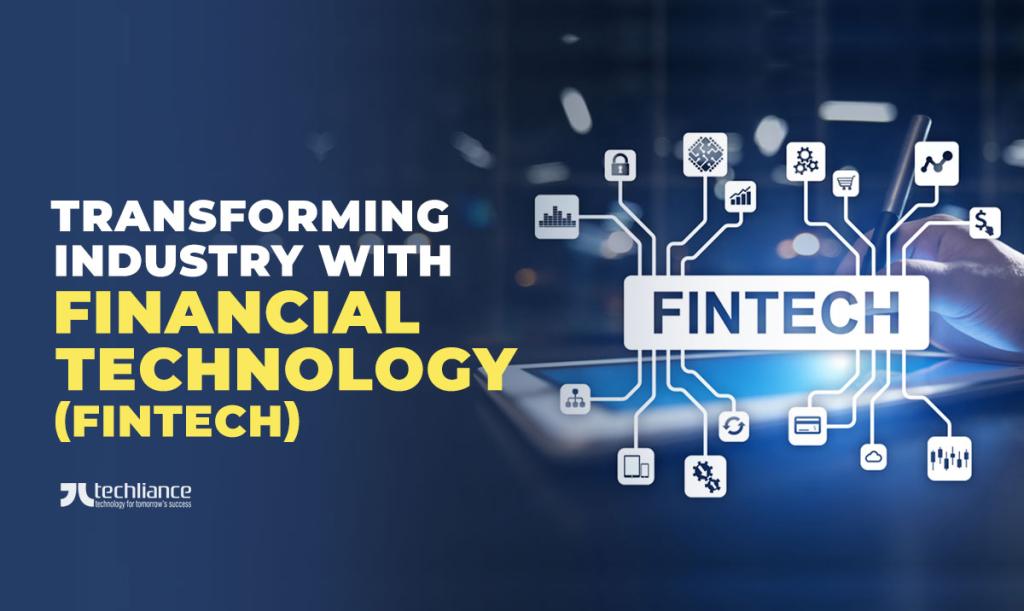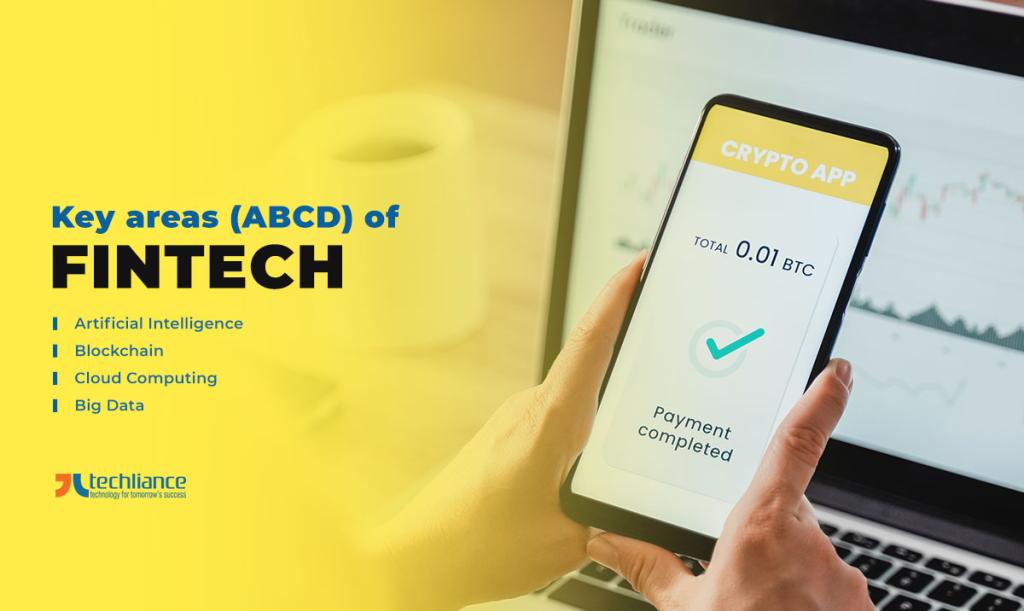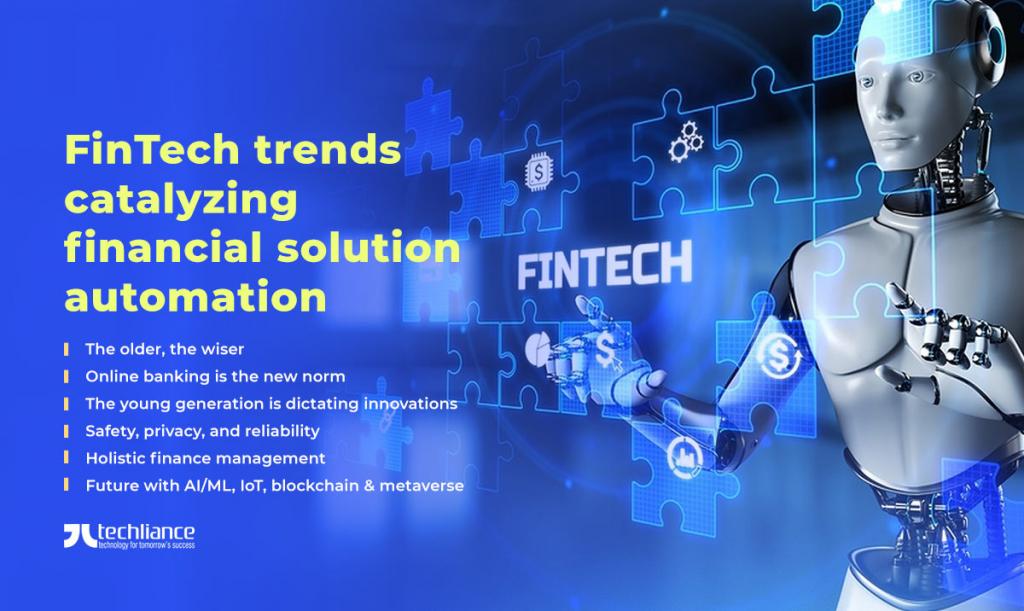Globally and in the USA, the majority of financial transactions are taking place online during 2023. Almost, any kind of purchase is now paid through some form of online payment. So, that brings financial technology (fintech) into the limelight.
In today’s fast world, it is all about bringing ease to financial services. With the constant exchange of money between accounts and stakeholders, the rotation requires continuous transactional and financial activities. That’s why fintech is not just a cool jargon that people use to talk about financial technology.
Thanks to this modernization, on-demand tech teams are revolutionizing financial institutions, companies, banks, clearing houses, and more. This concept of FinTech is advertently influencing both stakeholders (business owners and consumers). After all, money is one of the necessary things that make everyone go around.
This makes it worthwhile to merge technology with finances. So that we have the most beautiful coming together of the largest industries in the world. The simplicity of allowing users to perform all types of transactions makes fintech the next house-door name.

Table of contents
- What is financial technology (fintech)?
- Key areas (ABCD) of fintech
- Other innovations boosting the fintech ecosystem
- Fintech trends catalyzing financial solution automation
- Conclusion
What is financial technology (fintech)?
Financial technology (fintech) is the application of modern software to transform finances, making them faster, easier, and more secure. This has made monetary transactions faster, easier, and more secure. FinTech is a portmanteau word made from financial and technology.
The coolest thing is that financial technology is reshaping the way we do business. Fintech products are bringing a new wave of technological trends. This is true both internationally and in the United States.
A 2018 research by McKinsey & Company found that traditional financial institutions are exploring innovations. Just around 5 years from that point, fintech is one of the trending industries to follow.

Key areas (ABCD) of fintech
Every year it seems we are on the brink of something truly magnificent. Yet, it seems every year we also witness something spectacular. Fintech solutions are attending to the financial market pulse by delivering products and services.
They have great business value for users as well as enterprises. These technologies are vital tools for allowing the development of compliant products. Also, they have a greater range and capabilities for financial institutions.
These are the four key areas of financial technology (also known as ABCD of fintech).
- Artificial Intelligence
- Blockchain
- Cloud Computing
- Big Data
Let’s take a look at some of these key areas of fintech.
Artificial Intelligence
AI has already built its niche for fintech, Particularly, through the wider allowance of data sorting, manipulation, and speculative techniques. Artificial intelligence solutions are now just not the need of the day, they have become rather a sort of a necessity.
As they help you stay in competition with existing financial institutions who are avidly using AI to their advantage. AI and ML technologies hold a huge potential that still has a lot of exploratory room left for businesses. Currently, several banking solutions are using modeling techniques and analytics for driving their consumers and existing data.
But further possibility on what’s next is promising and very much exciting even for potential investors. Take the example of cybersecurity-enabled solutions with multifactor authentication methods. Consumers have to pass different levels of verification tests (like face recognition) before they can perform any transaction.
Some AI-driven solutions even allow companies to read the facial expressions of users. Accordingly, they can understand if users are under any potential threat for performing any transaction. This way financial companies can detect (and stop) any potential fraud or theft attempts.
AI-built solutions have a greater margin for accuracy for processing large data for creating insights to drive business decisions. Moreover, AI and ML also help in automating financial processes. Different stakeholders on various levels are rid of the hassle of daily operations to focus their attention on urgent matters.
Some powerhouse fintech companies lead the way in developing AI solutions that truly stand apart with their brilliance and precision. Take the example of the Alpaca Forecast AI Prediction Matrix built for Bloomberg users. It is powerful and efficient to process millions of records, movements, and patterns; and even predicts future price fluctuations.

Blockchain
How can blockchain not make the list? Perhaps, it is the most critical of technologies that have shaped the fintech industry in less than a decade. Since 2018, blockchain solutions are just simply indelible and an undeniable force to reckon with.
The primary objective of blockchain is to allow anonymity, security, and discretion to users. You can avoid any possible attempts of fraud, identity theft, and cyber crimes. Consequently, financial institutions across the are embracing blockchain.
As each transaction is encrypted with zero possibility of fraud. Hacking itself is extremely difficult as each transaction is approved by the network stakeholder. The star of the Blockchain concept is tokenization which allows international businesses to use universal currencies instead of country-specific money.
This is a breakthrough as no country holds dominion through the currency. But it’s the Blockchain technology itself that is equally favorable to all users irrespective of their nationality. Blockchain is continuing its dominance throughout the world and in the US.
Even the banks such as Commonwealth Bank of Australia, Alfa Bank, and many others are joining in this trend. Also, blockchain offers you the choice of expanding your payment options with altcoins. Blockchain is another step in making currencies and financial transactions paperless.
Other innovations boosting the fintech ecosystem
Fintech solutions have a persistent eye on assurance of wider security. Thus, they are constantly keeping businesses and users safe from possible fraud and security breaches. The need of the day is not just to develop solutions powered by these technologies.
You must allow users to have simplicity and greater usability through efficiency. Connecting these dots may look simple, but the sheer brilliance of using technology to advantage is the key. That’s how businesses are unlocking the global potential for financial markets.
Therefore, we are all aware of how awesome the end game can prove. Or maybe, it’s only the beginning? Some other changes are also shaping up the financial technology (fintech) landscape.
Now, we briefly look at these inventions in fintech.
RegTech Solutions
With a constant eye on regulations and compliance, Regulatory technology (RegTech) solutions are the next revolution. They help in monitoring regulation, compliance, and reporting in the fintech sector. RegTech is about the greater application of how businesses can comply with different types of requirements and restrictions.
Inability to meet those requirements means losing different licenses and the possibility of performing operations in different regions worldwide. One of the biggest compliance factors is how companies manage their data through different databases and the cloud. As businesses mature, it’s important to have a cheap, fast, and efficient way of data storage.
Preferably, in a single repository with wider security measures. It’s also crucial to enable a precise and automated search of a particular regulation. So that businesses can pass critical audits throughout the year.
Additionally, having pre and post-trade compliance is very important. It helps to connect financial institutions, regulators, and consumers. The primary objective is protecting the interest of all three parties.
With time, RegTech solutions are taking center stage in the financial industry. They allow expansions for financial institutions to comply with regulatory authorities in a great capacity. Besides, a lot of regulatory organizations are extending their hand to enable financial institutions.
This empowers them to learn and develop RegTech systems for greater coverage of compliance in their operations. In comparison to 300 million regulations, only 150 RegTech companies are creating solutions. It’s a very contrasting ratio that encourages businesses to take up this for greater adoption of mandatory government regulations.
In turn, there are fewer crises to deal with and lesser fines. After all, the need of the day is a proper resolution to this situation. So that financial institutions are better equipped to deal with gaining and then retaining compliance.
Machine Learning
ML is a key concept within the AI domain that aids in fraud prevention, especially for cybersecurity. Any anomaly detected that is outside the usual behavior can be identified, with an alert sent to authorities. Even it allows AI to lock or disable different functions at the users’ discretion.
The same thing applies to risk management, and fund development prediction. Similarly, it allows efficient customer service by building a smart client profile. IoT is also expanding the horizons of fintech to lift the financial industry.
Imagine the power of machines such as POS devices, ATMs, databases, smartphones, etc. Working together to share, collaborate and organize functions, operations, and processes for users. All of these capabilities of machine learning add up to deliver a greater user experience.
Citibank has greatly revolutionized the banking experience. During off-time, users can unlock ATM entrances with smartphones. This itself holds promise on what further possibilities exist for fintech solutions to provide to their users.
Conversational Chatbots
Another concept interwoven with AI is chatbots. They prove a great tool for managing different types of conversational banking situations. Users have questions all the time about banking operations.
Whether it is about locating the ATM, regaining access to their lost card, or resetting forgotten passwords. Some form of intervention is compulsory that is usually in the form of human help. But smarter chatbots turn out the answer to this problem — all through AI and ML.
Equally, account management or financial management are also some of the crucial concepts where answer-bots can come in handy. They can advise users on the process and what they should do next. It’s about security, manageability, and flexibility in all types of financial transactions.
Process Automation
The concept of robotic process automation (RPA) is probably a little hard to imagine in fintech. Because when we consider robotics, we think of machines performing tasks without any stoppage. But imagine the seamless automation of processes.
Does that ring a bell? That’s where RPA and business process automation (BPA) join the corners. Process automation is now being widely used for the orchestration of workflows in financial transactions.
Several financial institutions are utilizing this technology to complete tasks via a graphical user interface (GUI). A variety of functions can be automated through it — such as auto-selecting items, sending out emails, creating reports, etc.
Robotic process automation is rather unchartered territory for the majority of financial institutions. But its usefulness remains a viable source of fintech solutions that can have a great purpose. For example, collecting statistics, calculating values and managing transactions, extracting summaries from large documents, and even controlling emails and attachments.
A great merger between RPA and RegTech solutions can be by managing regulatory documentation. Robotic process automation can play a role in attaining and maintaining compliance with regulatory authorities. Robotics has great usage in the supply chain, logistics, and goods delivery.
Fintech trends catalyzing financial solution automation
Today, everybody likes to talk about money, financial stability, and economic growth. Arguably, the world is gradually moving towards digitization. Financial technology (fintech) is playing a vital role in this transformation.
FinTech services are all about providing cutting-edge software solutions built upon intelligent algorithms. Mobile applications, web-centric systems, and cloud connectivity keep stakeholders more up-to-date. With better insights, users get greater ease in performing their financial transactions.
Here are some trends that are driving financial technology (fintech) in 2023.
- The older, the wiser
- Online banking is the new norm
- The young generation is dictating innovations
- Safety, privacy, and reliability
- Holistic finance management

Next, we discuss these trends that are expanding the skies for financial technology (fintech).
The older, the wiser
It may seem strange, but when it comes to asset management, older people take it more seriously. Especially, due to COVID-19, the tides are progressively changing in financial institutions. Demographics show that many older Americans were using online digital services for sending payments more than ever.
Online banking is the new norm
Banks and financial institutions are getting smart by allowing users to utilize digital banking. The concept of your bank just being a click away with a 24-hour reach has a great attraction. Accordingly, you don’t have to visit the bank to carry out financial activities.
You can operate your bank account online and through mobile round-the-clock. Also, you have a complete overview of all your funds transfers and other financial transactions. These are some of the factors which make FinTech apps and online financial solutions sought-after by consumers.
Over two-thirds of consumers worldwide indulge in using online banking systems or apps to access their money. Moreover, it has given a new lifeline to financial institutions to sustain their business after the Coronavirus pandemic. The majority of financial businesses, including banks were struggling because of travel restrictions.

The young generation is dictating innovations
The US saw a 200% increase in new banking registrations and 85% mobile banking traffic by April 2020. Essentially, young people have become more tech-savvy over time. They want to have the most convenience of using mobile phones for performing financial transactions.
Through the year 2023, we all are going through a transition towards the financial automation of the world. The perceptions of users about financial technology (fintech) are changing. So, now youth is embracing fintech which is leading to economic progress internationally and in the United States.
Safety, privacy, and reliability
A major component of financial technology is to allow users the security of their assets and identity from possible breaches. Subsequently, businesses must enable customers to access their finances securely and reliably. There is nothing like having access to your financial accounts to perform transactions from the comfort of your home.
This is a necessary feature of value-added solutions for financial institutions. So, they must allow customers to have complete command of their accounts. Online threats are increasing daily, so investment in cybersecurity is a must.
Alerts on account access from a new device and funds transfers are beneficial. Likewise, splitting the OTPs between email addresses and mobile texts is a good idea. Such security measures help users to uphold privacy to remain secure in every aspect of monetary transactions.

Holistic finance management
Banks, credit unions, and other financial companies are becoming smarter globally and in the USA. They are spending extensive efforts in enhancing the customer experience online. Most such institutions start with MVP web-based solutions or pilot apps to test the waters and see customer response.
Efficient, fast, and holistic financial solutions are the need of the day. They observe various user groups in diverse demographics to learn what is the requirement. Then, they work on providing customizable solutions to users.
A lot of financial institutions are collaborating with third-party vendors. These partners build mobility solutions that can add value to their legacy systems. Such collaborations make up for all they lack.
Times are changing, as users dictate how financial institutions should operate. Thanks to FinTech, all financial companies are rolling up their sleeves to come up with par-level solutions. These are compliant, regulated, and at the same time appealing to the users.
Future with AI/ML, IoT, blockchain & metaverse
Only a decade ago, we could never predict the turn of events. At that time, plastic money was the most dominant factor in the financial world. Everybody thought it obvious that credit and debit cards are the future of money.
However, blockchain technology is making the dynamics of financial services even more exciting. Cryptocurrencies like Bitcoin are the future where users can see a secure, digitized, and powerful concept for financial transactions. Metaverse, crypto wallets, and NFTs are adding a whole new dimension to finances and economies.
Remember the value addition by artificial intelligence and machine learning to understand how consumer behavior is driven. Furthermore, cloud technology, AR/VR, IoT, and other innovative breakthroughs are making this all more interesting. Consumer spending patterns, and customized solutions — both play a huge role in how fintech apps are built.
Modern businesses, pioneering startups, and futuristic brands are learning from us, to advise on what suits us better. And the cycle just never seems to stop. The cherry on the cake is that the possibilities are endless.

Conclusion
Financial technology (fintech) is eventually empowering businesses by paving the way for higher reach to users. This is a testing time for us all as Coronavirus has taken everyone aback. Consequently, the majority of businesses around the world are shifting towards an online model.
FinTech is boosting online shopping as it allows users to directly pay through existing financial institutions. Ultimately, it all connects — users, their demands from online sellers, direct access to their accounts, and purchases through financial institutions. Everything knits together to allow greater power to consumers for continuing their daily lives without any hindrance.
Financial technology (fintech) remains a powerful force in the market. It allows companies to explore various possibilities and continue remaining afloat in these challenging times. That’s why almost all businesses, even big companies like Apple and Google are launching their financial services to users.
Tech companies are now creating fintech solutions to help balance the demand and supply of financial products and services. Building a fintech system can win user audiences on a global scale. So, begin your journey towards a successful fintech application.
Do you need a performant financial system to boost your sales? Are you figuring out how to connect with your audience without worrying about the security and reliability of the software? Do you look at your competition and realize you are losing out because you don’t know where to begin from?
You are just a click/tap away from moving toward the right track. Techliance can help you in getting the quality fintech solution for upscaling your business today. Let’s join hands to streamline the financial transactions of your users.
About the author




